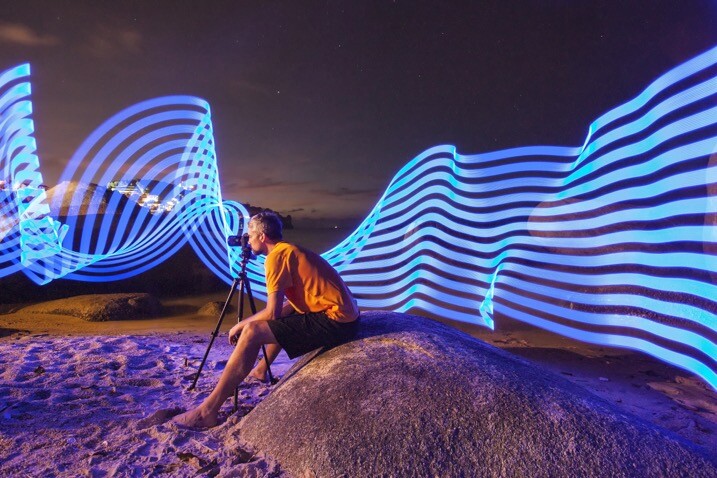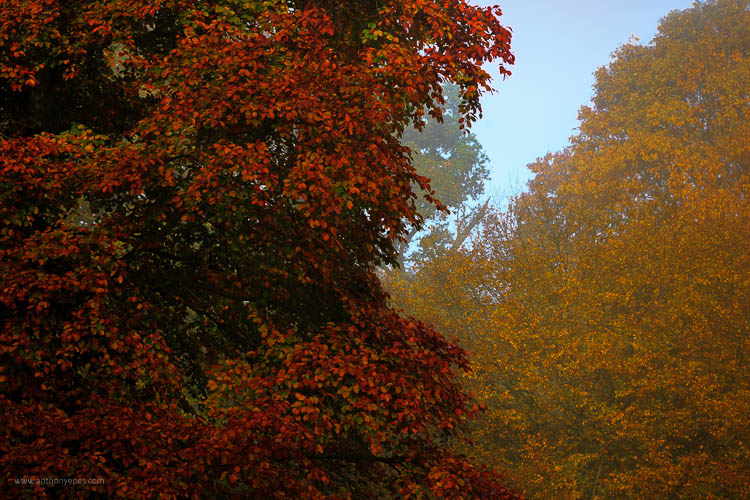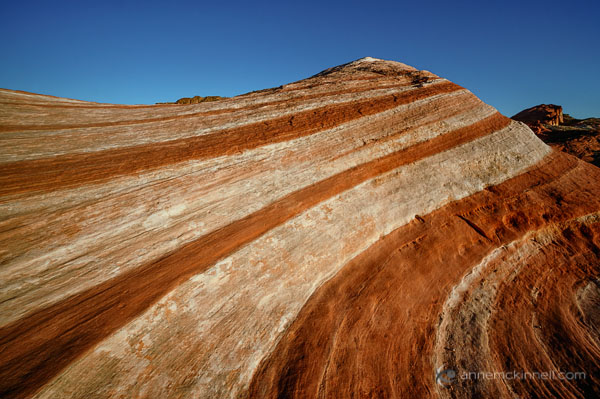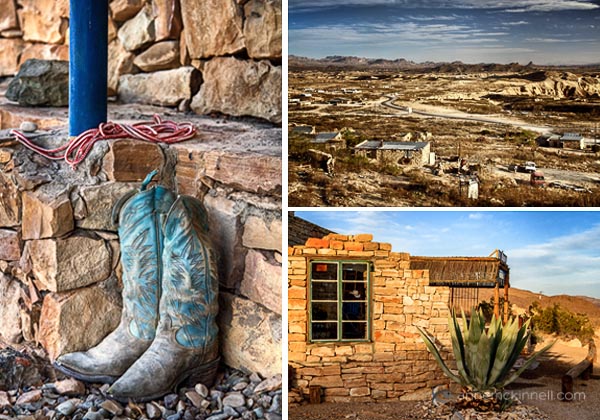The post 12 Creative Photography Project Ideas to Get You Motivated appeared first on Digital Photography School. It was authored by Simon Bond.

Looking for some fun, creative photography project ideas to get you inspired and excited about taking photos?
It’s always good to be involved in a photography project, and in this article, I’m going to share 12 of my favorite project ideas, including 52-week projects, 365-day projects, and more.
So if you’re ready to find the right project for your needs, then let’s get started!

Before you start your creative photography project
As with anything in life, once you have a project idea, it’s important to think it over and make a clear plan of action. This is a big step toward being successful. So if you have a project in mind, before you actually start snapping photos, consider the following points:
- Give yourself time. Keep in mind the amount of free time you have. Is it realistic for you to complete the project? There are some projects that take a real time commitment; make sure you have a good plan in place if this is the type of project you decide to tackle. And ask yourself: Are there any important events over the next few weeks, months, or year, such as a wedding or a house move, that might make it difficult to finish?
- Plan out all the details. If your project is long term, perhaps lasting a whole year, then make a plan for how you’ll achieve it. A 365 project is especially demanding, as you need to take a photograph every day. If you can, plan out every day of the project – and make your plan prior to getting started.
- Allow for the unexpected. There will be times when you get sick, come home late, or your drive or motivation isn’t quite there. The plan you make for your project should include some easy days. Think of it as cooking ahead and having some frozen food in the fridge ready to reheat. In photography, there are always a number of photos that are very easy to take but still look striking. Keep some easier photos held back for times that you need a break.
12 creative photography projects to energize your work
As a year is 12 months long, I’ve included 12 project ideas (though some of them will take all year, whereas others might only take a weekend). Pick your favorite, or – if you’re ambitious! – choose more than one!
1. The 52-week project
This is a year-long project where you take one photograph per week. Tackling such a lengthy project is demanding, but if you can plan out some (or all) of your shots before the project starts, you’ll be a lot more successful.
Note that you can always customize the project to keep things more interesting and/or cohesive:
- You can have a monthly theme. This might be a month of portraits, a month of landscapes, a month of spring, and so on.
- You can have a weekly theme. The first week can be shadows, followed by camera rotation, with digital blending after that, etc.
If you want to do regular photography but you’re not quite ready for a daily project, the 52-week project is a great one to pick.

2. The 365-day project
This is an intimidating project to take on, which is why many people go for the 52-week version listed above. However, like a relationship that requires a major time commitment, the reward for this project is often worth it.
Now, the original 365 project required daily self-portraits, which made it even tougher to complete. But a lot of people simply look to take one good photograph per day, be it a landscape, portrait, or macro shot. If you’re not sure how to get started, here are a few ideas:
- The self-portrait 365 project. Take a selfie every day for a year.
- What’s on your plate? Photograph your meal every day.
- Life at sea. Show the different aspects of sea life. This is a diverse project that can include seascapes, macro photos, fishermen, and underwater photography (if you have the gear).

3. Follow one consistent theme
Want to really focus your mind (and hone a specific set of photography skills)? Choose a theme, and only take photos aligned with that theme.
This creative photography project can easily work as a 365-day or 52-week project. Here are just a few ideas to get you started:
- Concentrate on a single technique. Take photos with a crystal ball, using an infrared camera, etc.
- Have a topic for inspiration. Look at everyday objects and occurrences, then pick a topic that interests you. You might photograph only Chinese food, for example. Or you could do a clothes-related project – you could photograph only denim, or if you’re in Korea, you could photograph hanbok.
- Photograph at the same time every day. Pick a time of the day and photograph only at this time. For instance, you might shoot every day at 6 PM, which will offer plenty of interesting light (plus, it will change throughout the year).

4. Limit yourself to 24 photos
Photographers who photograph film know all about restraint – they will attest to the importance of really considering every photograph. So why not put yourself in their shoes and limit yourself to a certain number of shots per outing, day, or week?
The specific limit is a personal choice, but make sure the number isn’t too large (you want the project to involve some actual work, after all!). Personally, I like the idea of 24 shots – this hearkens back to the days of film – though you can also do 36, 20, or even 10.
To really emulate the feeling of shooting film, try only capturing 24 photographs for one week (no deleting)! With this project, every time you hit the shutter, you need to know you’re photographing from the best possible angle and with the best composition. Learning to successfully shoot with restraint will improve your work in leaps and bounds.
5. Use the title of a song or album
Delving into other mediums can be a great way to come up with a cool creative photography project. A lot of people take a photo, then make a title to go with it – but a better approach for creativity is to know the title of your photograph before you hit the shutter button.
In other words: You determine your photography concept in advance based on your shot title. Then you problem-solve to get the result you need.
You can get your titles anywhere, but I recommend looking to your favorite music album or song. Here are a few additional ideas:
- The project could use an artist’s album titles
- You could choose song titles, then turn them into photo titles
- You can use the lyrics in a song to inspire photos

6. Use only one (prime) lens
Most photographers own quite a few lenses, not to mention zooms with huge focal length ranges. And while this isn’t necessarily a bad thing, you may find yourself becoming lazy over time – using your zoom lenses, staying in the exact same place, not making a significant effort to really work a scene.
That’s where this photography project idea comes in handy. Simply shoot with a single lens for a day, a week, or a month, and you’ll quickly appreciate the value of careful composition, zooming with your feet, and more.
A really good lens to get started with is the nifty 50 (i.e., a 50mm f/1.8 or f/1.4). The fixed focal length will force you to consider composition more carefully, and you’ll get a perspective similar to the human eye.
Of course, you have plenty of options, and any lens you could choose will have its merits. If you want to get really creative, try using a fisheye, tilt-shift, or macro lens.

7. Only use a smartphone
Who says your creative photography project should be high-tech? There’s a lot to be said for stripping your photography gear down to the basics, and your smartphone is perfect for this.
There are plenty of camera apps that can give your smartphone DSLR-like functionality (and you can buy clip-on lenses if you’re looking for added flexibility).
That said, the purest smartphone project will only use your phone’s basic camera app. So don’t be afraid to pack away your fancy cameras and use your smartphone’s native camera app for a week. Focus on what you can do with composition, light, and a perfectly timed moment of capture.

8. Find a story
No matter where you live, you can find a story to tell, though it will likely differ depending on whether you’re in a city, the country, a hot climate, or a cold one. Is your local area famous for any type of food? Are there any famous landmarks such as castles or temples nearby? How about an annual festival?
Once you’ve settled on your story, approach it in the way you’d photograph on assignment for a magazine. Try to tell the entire story. Use a variety of techniques and shoot a variety of subjects.
At the end of the project, you should spend some time picking a final set of photos – not necessarily the best individual shots, but the images that best tell a story. If you get a good result, you might even consider pitching it to a magazine!

9. Learn a totally new technique
Once you know how to use your camera, it’s easy to get complacent – to shoot with the exact same techniques, the same settings, the same rhythm. So why not try focusing your project on a new technique?
Learning a new technique can be both exciting and intimidating. It may also require a significant time commitment. There are not many creative photography projects more energizing than learning something brand new, though. Here are some fun techniques to consider:
- Digital blending. This technique will improve both your landscape photography and your Photoshop skills. There are aspects of blending that are tough to master, but it will absolutely be worth it.
- Crystal balls. Using a glass ball as a type of external lens is a lot of fun, and it’s a great way to create some unusual photos.
- Light painting. This is a hot topic in photography. Will you learn to take zoom bursts? How about making light orbs? Will you use a Pixelstick?
- Drone photography. This is another photographic genre that’s becoming increasingly popular. Invest in a drone, shoot with it regularly, and you’ll be on the cutting edge of photography.
- Hyperlapse. Take a series of photos and turn them into a video. Some of the most creative photography projects out there use this technique!
- Off-camera flash. Many photographers struggle to master flash; take the time to learn it, and you’ll go a long way.

10. Have a potluck photography party
Everyone’s been to a potluck party – they’re the ones where everyone brings along their own food. And the collaborative nature of potluck parties makes them perfect for getting together with other photographers as part of a creative photography project.
How do you organize a potluck photography party? Each person should bring along the following:
- A camera body and one camera lens
- One prop or piece of camera equipment
While everyone will use their own camera to take photos, the idea is that the prop or piece of equipment can be shared – so you might end up with one tripod, or one umbrella, for the entire group. And at every event, the available equipment will be different, offering different image opportunities.
You can come up with a theme for the potluck that everyone must follow, or you can have a theme for your own shots. This one’s a very open-ended project idea, so have fun with it!

11. Follow an A-Z photography list
This type of project can be extremely fun. All you do is photograph the alphabet!
You might start by writing out a list of topics you want to photograph (one for each letter). Or you can take a more spontaneous approach and photograph each letter as you encounter it.
This is a fun game that can be used for group photowalks, or you can play it on your own – when traveling, or simply when out with your camera.

12. A day in the life
A day in the life is a good, short project to work on – because it only lasts one day! Simply find someone whose life you want to photograph and ask them if you can tag along for a day.
Of course, you don’t have to stop there. You can always do a series covering different people. And the project doesn’t have to be about people; life is everywhere, so you could follow your pet or even photograph a natural area.
That said, the best projects do tend to be about people and their lives (a day in the life that looks at different people’s professions is a great choice).


Get started with your creative photography project!
Well, there you have it:
12 photography project ideas to get you motivated! Hopefully, you found at least one or two of these ideas compelling – so pick your favorite, make a plan, and then dive in!
Now over to you:
Have you tried a photography project before? Do you have any favorite projects you’d like to share? Also, which project from this list do you plan to do? Share your thoughts in the comments below!
The post 12 Creative Photography Project Ideas to Get You Motivated appeared first on Digital Photography School. It was authored by Simon Bond.









 Arc de Triomphe Etoile Water Mirror Reflection by Loïc Lagarde on 500px
Arc de Triomphe Etoile Water Mirror Reflection by Loïc Lagarde on 500px
 In the Morning Light by Teguh S on 500px
In the Morning Light by Teguh S on 500px
 Reflections by Marco Britto Photography on 500px
Reflections by Marco Britto Photography on 500px
 brooklyn.bridge.two by Robert Pfeuffer on 500px
brooklyn.bridge.two by Robert Pfeuffer on 500px
 Watercolours by Whatshisname on 500px
Watercolours by Whatshisname on 500px
 Blue Honey by Lorenzo Cassina on 500px
Blue Honey by Lorenzo Cassina on 500px
 Positive Vibes by Josep Sumalla on 500px
Positive Vibes by Josep Sumalla on 500px
 Surreal by Lorenzo Cassina on 500px
Surreal by Lorenzo Cassina on 500px
 illusion by Vasilis Athanasopoulos on 500px
illusion by Vasilis Athanasopoulos on 500px
 Couple by Joanna Lemanska on 500px
Couple by Joanna Lemanska on 500px
 The Biking Dutchman by Roeselien Raimond on 500px
The Biking Dutchman by Roeselien Raimond on 500px
 Captured Clouds by Petter Lidbeck on 500px
Captured Clouds by Petter Lidbeck on 500px
 En el calor de la noche by Gemma on 500px
En el calor de la noche by Gemma on 500px
 Back to the HotRod by KAMERAKIND on 500px
Back to the HotRod by KAMERAKIND on 500px
 trio . . . by Brian Denton on 500px
trio . . . by Brian Denton on 500px
 Hot Air Reflection by Gladner on 500px
Hot Air Reflection by Gladner on 500px
 Morning Glory by Samuel Sharpe on 500px
Morning Glory by Samuel Sharpe on 500px
 GT Sunset by Simon Brown on 500px
GT Sunset by Simon Brown on 500px










You must be logged in to post a comment.